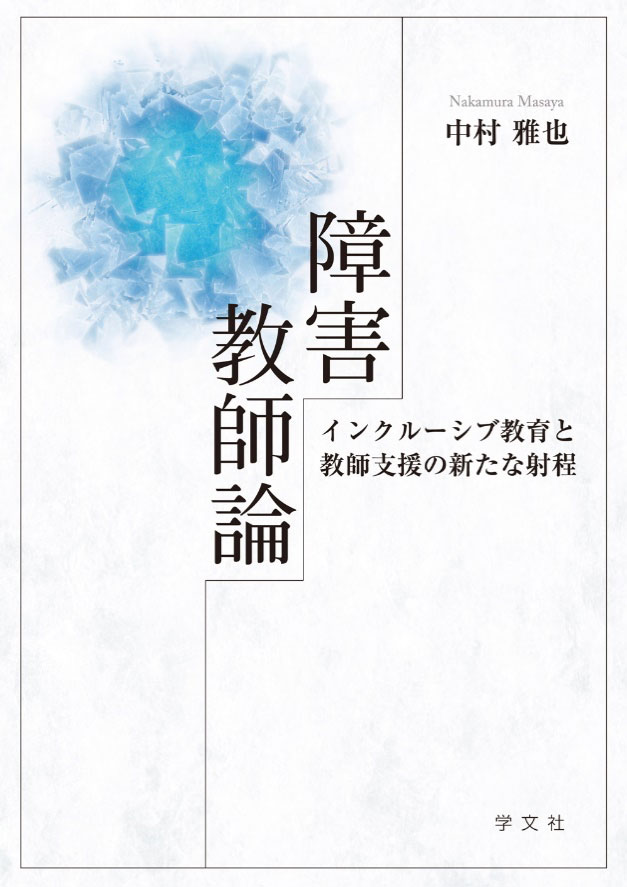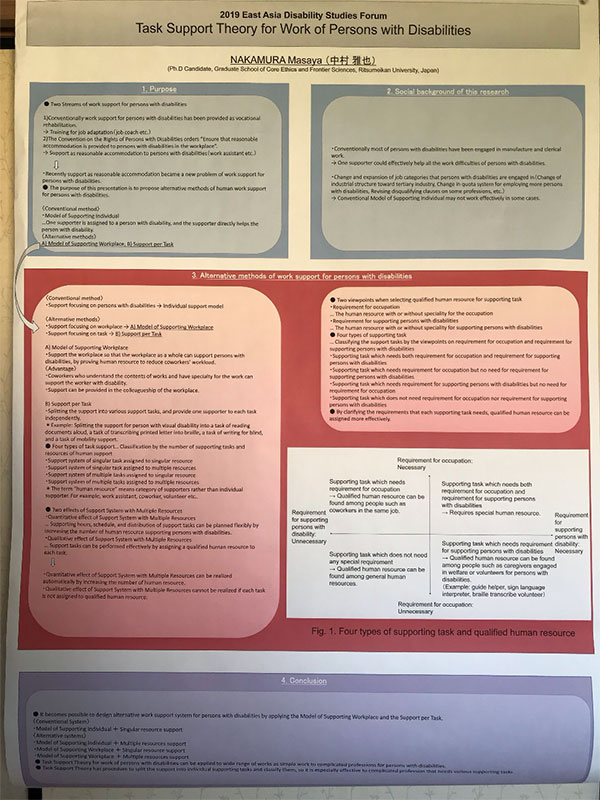Reexamining education from the perspective of teachers with a disability.
There is an enormous amount of research on people with disabilities in the field of pedagogy, but nearly all of it concerns the targets of education such as children and students. When it comes to teachers, the people responsible for providing education, on the other hand, it is taken for granted that they must not have a disability, and their disabilities have been rendered invisible. Because of this, almost no research on teachers with a disability has been conducted. I have worked as a teacher for almost twenty years while having visual disability. During this time, I have interacted with many teachers with disabilities and thought about the meaning of people with disabilities working as teachers. I have also been keenly aware of the fact that an environment in which teachers with a disability can fully demonstrate their abilities and engage in the practice of teaching has not been put in place. With these kinds of experiences as a teacher with a disability as my starting point, I undertook research on teachers with disabilities at a graduate school, and have published my findings as Shogai kyōishi ron inkurūshibu kyōiiku to kyōishi shien no aratana shatei [Teachers with Disabilities Theory – New Scopes of Inclusive Education and Teacher Support] (Gakubunsha, 2020).
I coined the term “teachers with a disability theory” used in the title to refer to the academic domain of studying and elucidating the actual conditions regarding various phenomena involving teachers with a disability and reexamining existing education from the perspective of such teachers. For many years, teachers with a disability have been excluded from schools, the places where education is actually conducted. This has happened because there have been circumstances that made it impossible to accept teachers with disabilities at these places. Rather than specific circumstances arising at individual schools, however, these can be thought of as circumstances caused by the structures found in schools as organizations and the school system. By elucidating the circumstances in which teachers with a disability are excluded from schools, unseen structures in schools and the school system are revealed. In addition, within teacher-student relationships there is generally in asymmetry in which teachers are in a position of superiority. Likewise, in relationships between people with a disability and people without a disability there is an asymmetry in which people without a disability are placed in a position of superiority. In relationships between teachers with a disability and students without a disability these asymmetries intermingle, and a different relationship from the teacher-student relationships of the past is constructed. This should present us with new possibilities regarding teacher-student relationships. In this way teachers with a disability provide us with an effective perspective from with to reexamine topics such as education, schools, and teachers.
I will give a brief introduction to the content of my book using two key terms from its subtitle, “inclusive education” and “teacher support.” I’ll start with “inclusive education.” “Inclusive education” is education that respects the diversity of human beings in which children learn together regardless of whether they have a disability or not. Until now inclusive education has only been viewed as education that includes children with disabilities. If it is to be education that respects diversity and includes disability, however, it must presumably include the other category of people directly involved in education, teachers, with a disability as well. Inclusive education can only be said to have been achieved once teachers with a disability have been included. This book presents teachers with a disability, who have not been included in the scope of inclusive education up to now, as an important factor in the realization of this kind of education.
Next there is “teacher support.” Until now, teacher support has been implemented as support in the formation of capabilities with the aim of making teachers able to deal with various difficulties and perform their professional duties with their own skills and abilities. Here there is an assumption of a perfect form at which teachers must aim in which they are able to accomplish all of their professional duties. The difficulties of teachers with disabilities, however, are not difficulties that can be resolved through the formation of their own capabilities as individuals. They therefore require assistance in performing some of their duties or need to have someone else perform them in their place. Breaking free from this assumption of a perfect form in teacher support, this book points the way toward teacher support that guarantees the performance of professional duties while accepting imperfection.
The study of teachers with disabilities has only just begun. Going forward I hope to continue to develop teachers with a disability theory, both as research essential to supporting teachers with a disability in practicing education and promoting inclusive education and as research that effectively reexamines existing approaches to education.
Masaya Nakamura
(Research Fellowship for Young Scientists from JSPS)

Photo 1: Cover of Nakamura Masaya’s Teachers with Disabilities Theory – New Scopes of Inclusive Education and Teacher Support](Gakubunsha, 2020)

Photograph 2: Poster presented at the 9th East Asia Disability Studies Forum (EADSF) 2019 in Wuhan, China.











